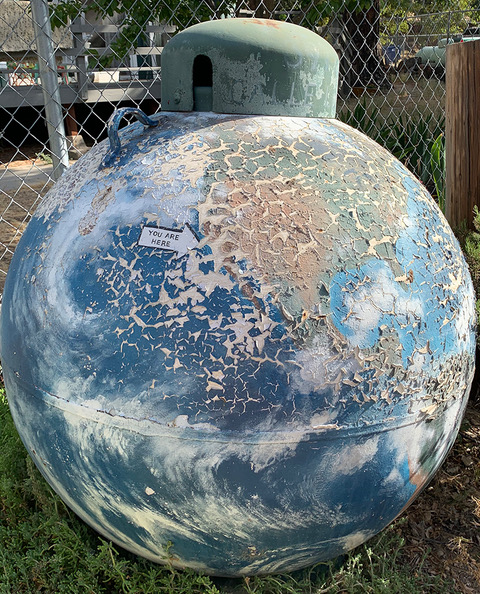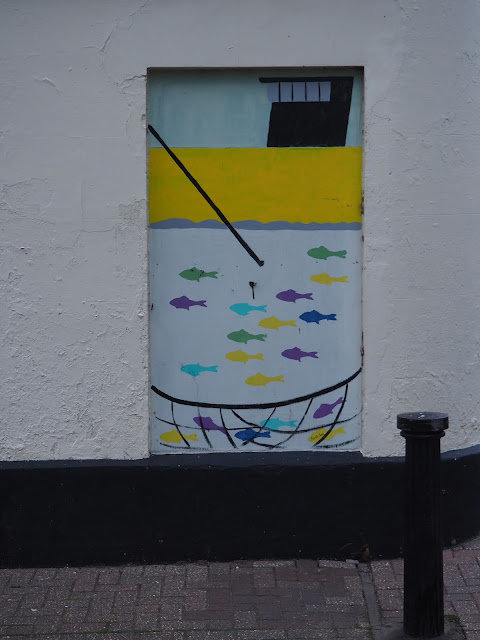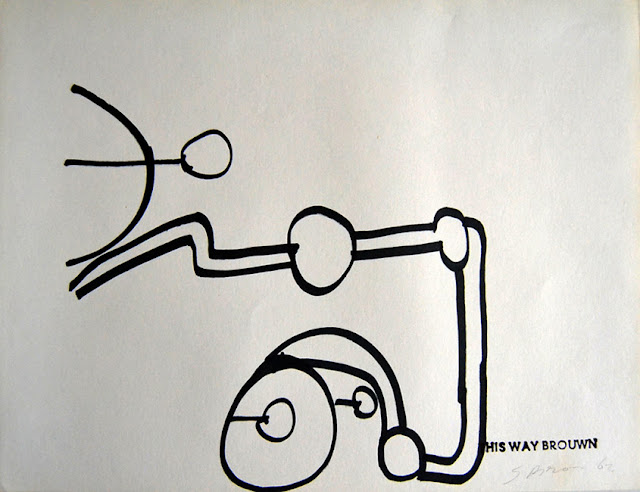“PHOTOGRAPHERS DON’T have eyes in the back of their heads. Janet Sternburg does. This book makes you understand the act of seeing and the reflection that might lead to a photograph in a whole new way. This book about the nature of photography is intense and confusing, but definitely essential.”
That’s Wim Wenders, giving Janet Sternburg a lot to live up to, in the introduction to her first book of photographs, Overspilling World (2016). She has now published a second, titled I’ve Been Walking, which is the occasion and inspiration for this essay.
¤
My work is about revealing an interpenetrating world. To that end, I use no manipulation whatsoever. I work with single-use and iPhone cameras because their limitations give me what I want, images that are close to the way our minds work. I want to encourage in myself and in others a kind of perception that leads to deeper reflection, which in turn leads to thinking about what matters personally and socially.
That’s a quotation, and an explanation, and perhaps even a manifesto, that appears prominently on Janet Sternburg’s website. Sternburg is also, as LARB readers may well know, not only a photographer but also a poet, memoirist, playwright, and essayist, among other things. In her new book, she tells us that she’s now using a more advanced, though still low-tech, camera.
¤
In the introduction to I’ve Been Walking, Sternburg tells us that, for much of 2019, she couldn’t walk. It was a “year of injuries, among them serious fractures as well as surgeries.” This has led me to think that there may be some crucial connection between walking, photography, and injury.
I was once walking in Los Angeles, in Silver Lake, thinking I was part of a fine, long tradition exemplified by Benjamin, Baudelaire, Debord et al, that I was a flâneur and a psychogeographer, observing things and soaking up ambiances. I was also taking photographs. Suddenly, for no apparent reason, I lost my footing on a perfectly innocent bit of sidewalk — having eyes in the back of my head would have been no help at all — and I made a rapid, involuntary forward dive in the direction of the ground. But it was the kind of descent that still gave me enough time to do a modicum of thinking. One of my hands was free, the other held my camera, which wasn’t especially valuable but also not disposable, and I was afraid it was going to smash as I hit the ground. So, I held the camera close and put out my other arm to break my fall. This worked, to a strictly limited extent. Yes, the arm broke my fall, but in the process, I broke the arm in three places.
The surgeon who operated on me had a signed photograph of Slash on her wall, which somehow cheered me up, though I can’t absolutely swear she stitched up the great man. As for me, I now have two long, neat, and (I’ve been told) photogenic scars that run the length of my right forearm. And yes, since you ask, my camera was absolutely fine.
¤
I tell this story partly to prove that walking isn’t always a safe, healthy, and benign activity, and also to suggest that there are, and have long been, plenty of (for want of a better term) photo-flâneurs walking the streets of Los Angeles. If you needed to prove this to anyone, you could show them photographs taken in the city by the likes of Catherine Opie, Weegee, Max Yavno, William Claxton, Catherine Corman, Julius Shulman. I can’t swear that all these photographers are, or were, great walkers, psychogeographers, flâneurs or flâneuses, but it seems to me they must all have spent a good amount of time with their boots on the ground while taking pictures.
You might also place Garry Winogrand on that list, perhaps chiefly for a couple of famous L.A. photographs: one that shows two women walking toward the LAX Theme Building, and a second that shows a man in a wheelchair on Hollywood Boulevard, his head slumped, as three extravagantly coiffed women saunter out of the sun toward the camera.
As a walker in L.A., however, Winogrand is something of a special case. He was not, strictly speaking, injured while in L.A., but by the time he lived there in the early 1980s, he had serious health problems that kept him from doing much walking. He had to be driven around while shooting through the windscreen or the open car window. Nevertheless, there are a couple of photographs, one taken by David Fahey, another by Ted Pushinsky, that show Winogrand standing (if not necessarily walking) on Hollywood Boulevard, camera in hand, interacting with passersby. A man walking the streets of L.A. photographs a man walking the streets of Los Angeles taking photographs: the photographic mise en abyme.
Winogrand, you could argue (and I would), was the greatest, and perhaps the last, of the true street photographers, a form that is fading, maybe even becoming impermissible. Capturing images of strangers in public places is regarded as at best intrusive, in some cases as a cause for litigation, and don’t even think about taking a picture when there’s a child on the street. But that doesn’t stop me, and quite a few people I know, walking the streets and photographing what’s there, and if that includes a few people, well, so be it.
Internal evidence — by which I mean my own Instagram feed — suggests that there are whole armies of people wandering the streets of Los Angeles photographing things, images by people I know well, by people I know slightly, by famous photographers I don’t know at all. Some are strictly amateur (if that term still has any meaning), some are successful professionals. The Instagrammers I’m following, with some connection to L.A., include Mike Slack, John Divola, Lisa Jane Persky, Dinah Lenney, Marlene Picard, Lynell George, and indeed Janet Sternburg. I’m not sure this means much to all of them. Does John Divola feel any happier if he gets 2,000 likes as opposed to 1,999? I shouldn’t think so. It’s people like me who get a thrill when a few dozen people approve of my snaps.
¤
I remember having discussions, well within living memory, about whether it was better to see photographs as prints on a gallery wall or as images reproduced in a book. Of course, it didn’t have to be one or the other. The gallery print may have been more authentic, but inevitably there were some images we were only ever likely to see in books. The three volumes of The Photobook: A History (2004–’14) by Garry Badger and Martin Parr did a lot to increase the prestige of the photography book as art object.
The book and the print are, of course, still very much with us, but inevitably we encounter more photographic images online than anywhere else. There’s nothing wrong with this: accessibility has its attractions, but the printed book still has a status and a materiality that a JPEG just can’t manage.
Which brings us back to Janet Sternburg’s I’ve Been Walking.
¤
By 2020, the year of COVID-19, Sternburg had recovered from her injuries and surgeries, and was walking in Los Angeles (county as well as city), gloved, masked, and taking photographs. “I’m not documenting Los Angeles during a pandemic,” she writes in her introduction, “Nor am I trying to present a comprehensive view of the city. Rather I want these images to be a meeting place of my way of seeing and the world out there.”
Arguably this is what all good photographs do, but this is not just another book of L.A. photographs. By my reckoning, there are maybe four images in the book that you could say with absolute certainty were taken in Los Angeles, perhaps a dozen more that you would reasonably guess were taken there. The rest, I know, couldn’t have been taken “just anywhere,” but what we have here is a landscape without the obvious markers of the city, a vision that gives us details, fragments, reflections, superimpositions, some of which are more or less abstract, and which present a worldview as well as a world.
Sternburg writes, “I had wanted to photograph front and back, inside and outside, solid and fluid by means of reflection […] so that everything in the image would blur and interpenetrate.” So, is this street photography? Well, if you’re in the street and you press a camera shutter, you are definitely taking a photograph of the world around you, but we’re not exactly in Winogrand territory here. Rather it’s a world of details, showing a certain amount of ruin, detritus, and decay. There are no great vistas or expanses, but there is cumulative effect, depicting a city on edge, an edge we still don’t quite comprehend.
There aren’t many people in these photographs, and even fewer faces, but the people who do appear are startling: a man painting a wall that could be a work by an unknown Abstract Expressionist; an armed, camouflaged National Guardsman, who still manages to look vulnerable.
In an interview that stands as a postscript to the book, Janet Sternburg is interviewed by Jane Bennett, who asks, “There are almost no people in your work. Why is that?” Sternberg replies, “I don’t know. Years ago, I read something about objects to the effect that the poet speaks for objects that cannot speak. It just hit me: yes, objects do speak. And they interest me more.” The extension of that idea may be that the object speaks to the photographer, and she passes on the message.
Sternburg’s approach is partly about finding beauty in the quotidian and the unconsidered, but more than that, it’s about seeing the world as discrete images that may be more or less ambiguous but are connected by our perception of them. The photographs then become a kind of metaphor for a way of seeing, and perhaps a way of being. It’s not exactly showing you things you’ve never seen before, though it is about pointing and framing, about (for want of a better term) raising awareness.
And if all this sounds a bit solemn, it’s worth noting that there’s a considerable amount of wit in some of the photographs. One, titled Lone, shows a skateboarder reflected in a window, but the upper panes are pebbled glass so that only the board, and the feet and calves of the skater, are mirrored in the plain lower pane. There’s also a standout single image titled The World as Gas Tank that shows the curved end of a gas cylinder, which looks like a globe, its paint flaking and with a label on it that says, “You are here.”

¤
At about the same time I started living in L.A., a photobook was published titled Looking at Los Angeles (2005), edited by Marla Hamburg Kennedy and Ben Stiller. It is a large, landscape-format volume, bigger than some coffee tables. I bought a copy as part of my acclimatization process, and at the time I thought it was wonderful. It contains photographs by many of the usual suspects — Ruscha, Eggleston, Winogrand, Julian Wasser, Richard Misrach, David Hockney — and quite a few by photographers I’d never heard of at the time but have come to know and admire: Mike Slack, Ed Templeton, Jeff Brouws, Helen K. Garber, Catherine Wagner. One of the strangest elements of the book is that the photographs show very few walkers, not even many people on foot, and the overall effect is to make the city look more denuded and uninhabited than it does in Sternburg’s photographs taken during the prohibitions enforced by the pandemic.
¤
There is a story, true as far as I know, that Julius Shulman, whose work appears in Looking at Los Angeles, attended a panel discussion at the Cinerama Dome to celebrate the publication of the book. While everybody else was saying how great it was, Shulman said, “I think this book is crap.” Stiller tried to make a joke of it by responding, “Julius, let me thank you for your ringing endorsement of this book,” but that didn’t appease Shulman, who continued, “This book is crud. […] What is wrong with these people? That’s your favorite picture? […] Yech, that’s crap.”
¤
One of my very minor claims to fame is not that I walked or photographed alongside Julius Shulman, alas, but that I once helped to carry him down a flight of exposed wooden stairs. It was after a party in Lautner’s Chemosphere House (now belonging to Benedikt Taschen), which is on a steep hillside and is served by a small funicular railway. Shulman was very infirm by that stage of his life, and I can’t remember why he didn’t use the railway; maybe it was out of service or maybe he just didn’t trust it. Walking down the stairs wasn’t an option for him either, but one way or another he had to be get from the house to where the cars were parked at the bottom of the hill. I was invited to grab one of Shulman’s legs, the right, as three other people grabbed three other limbs, and we began our descent. The steps were wet and slippery, and we moved slowly, with extreme care. There are still moments when I feel a small shudder at what might have happened, but of course we accomplished our mission: if we’d dropped him, you’d have heard about it by now. It would have been a really good time to have had eyes in the back of my head, just like Janet Sternburg.
Did I, do I, walk more carefully, more “mindfully,” than I used to before I had my fall? Probably not. But at least for now, I find myself walking around looking for Sternburgian fragments, images within images. And if I’m sometimes not quite sure what I’m looking at, well, that’s part of the process, and it’s reason enough to be grateful for the work of Janet Sternburg. Long may she walk.
¤
A LARB contributing editor, Geoff Nicholson is the author of many books, including The Lost Art of Walking and Walking in Ruins. His new book The Suburbanist will be published later this year.


























/https%3A%2F%2Fdev.lareviewofbooks.org%2Fwp-content%2Fuploads%2F2021%2F11%2FIve-Been-Walking.jpg)
